Instruction
How to hit shots from uneven lies
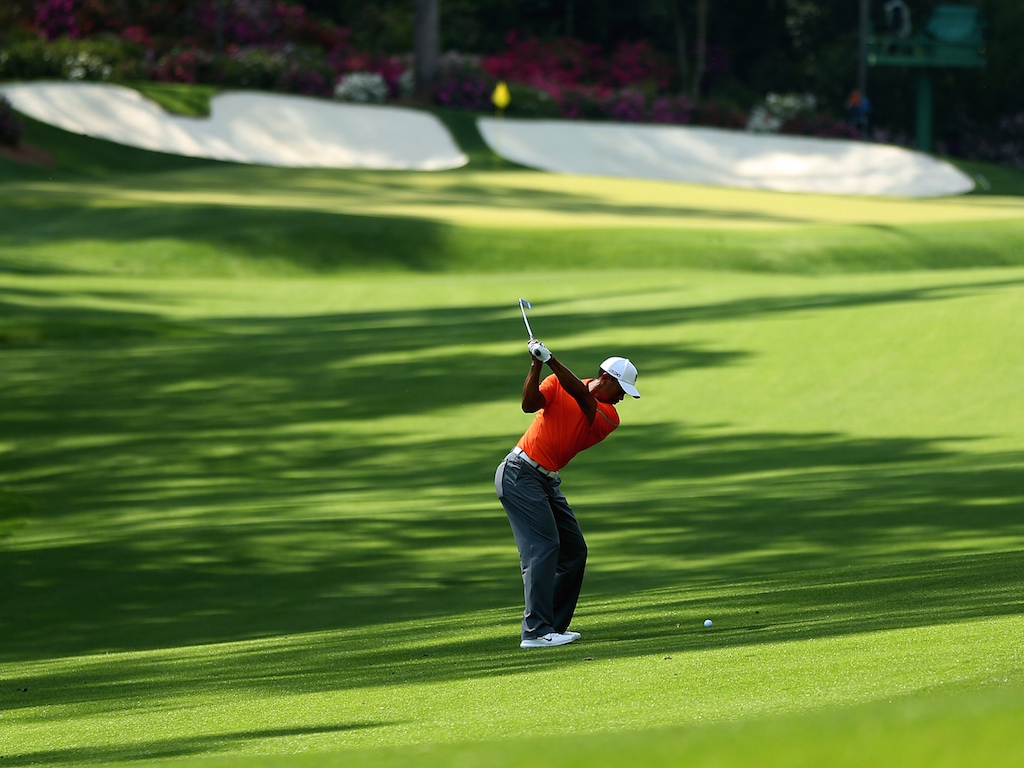
If you’ve ever been to the Augusta National Golf Club, you can appreciate the severity of the hills players have to deal with there. The property has something like 15 stories of elevation change on it. The par-3, 12th hole is some 150 feet lower than where the club house sits. If you have walked it, you’d know what I mean. While watching the broadcast, it occurred to me that a lot of my students struggle with hilly lies. If you do, here are some thoughts that might help.
The key to playing from uneven lies is posture. We need to establish a position from where we can get the golf club to bottom out slightly in front of the golf ball more consistently. To do so, you cannot address the golf ball the same way you would on a level lie.
Sidehill lie with the ball above your feet
The idea is to stand a little taller and swing a little flatter. Bend less from the hips, and swing the club more around than up. Allow for the ball to curve left from this lie due to the flatter plane and more upright lie angle at impact. Stand slightly farther from the ball with a neutral ball position, regular grip and aim slightly right of the target. I do not recommend choking up on the club, as this might require standing a little closer and it could force the club on a more upright plane.
Sidehill lie with the ball below your feet
The exact opposite of above. Stand a little closer, bend more from the hips and swing more up and down. The key here is a steeper attack angle, so the posture and distance from the ball need to facilitate that. Allow for the ball to curve slightly right due to the more vertical swing plane and flatter lie angle at impact. Grip and ball position are neutral.
Uphill lie
This shot requires a level attack angle, with your shoulders parallel and spine perpendicular to the slope — think of more rear side bend, or tilt to the spine. Imagine swinging down the slope and up the slope, and allow for the ball to fly considerably higher, which in most cases will require you to use less loft to hit the shot the correct distance. For example, a 7 iron may come off like a 9 iron. It’s easy to come up short.
Downhill lie
This is the toughest lie in golf. To play from this unwanted situation, change your posture exactly the opposite of the uphill lie. Your shoulders should be parallel and spine perpendicular to slope with help you swing more “down the hill.” The spine will be tilted forward and the weight will be on your lead foot. Swing “up the hill and down the hill” at the ball and allow for the flight to be much lower than normal trajectory. If you are faced with this shot to an unprotected green, it is not a problem. If the green is uphill or protected, it might be best to simply lay up in front. The biggest problem I see here is when players try to help this shot in the air and hit it fat.
Balance
The most difficult part of playing from hills is balance. It’s essential to keep what’s called your “swing center” over the ball. You cannot let the body sway too far off the ball, as the hill will not allow you to get back to impact in balance. I recommend using one more club in most instances, as the shot becomes more of an “armsy” one. You can learn to play from slopes if you change your posture and DO NOT try to fight the hill or the flight that ensues. Sometimes the golf course has us beat, and it’s usually best to take our medicine and go on from there.
If you’d like me to analyze your swing, go to my Facebook page or contact me ([email protected]) about my online swing analysis program.
- LIKE73
- LEGIT12
- WOW3
- LOL2
- IDHT0
- FLOP1
- OB0
- SHANK8
Instruction
Clement: Laid-off or perfect fade? Across-the-line or perfect draw?

Some call the image on the left laid off, but if you are hitting a fade, this could be a perfect backswing for it! Same for across the line for a draw! Stop racking your brain with perceived mistakes and simply match backswing to shot shape!
- LIKE0
- LEGIT0
- WOW0
- LOL0
- IDHT0
- FLOP0
- OB0
- SHANK0
Instruction
The Wedge Guy: The easiest-to-learn golf basic

My golf learning began with this simple fact – if you don’t have a fundamentally sound hold on the golf club, it is practically impossible for your body to execute a fundamentally sound golf swing. I’m still a big believer that the golf swing is much easier to execute if you begin with the proper hold on the club.
As you might imagine, I come into contact with hundreds of golfers of all skill levels. And it is very rare to see a good player with a bad hold on the golf club. There are some exceptions, for sure, but they are very few and very far between, and they typically have beat so many balls with their poor grip that they’ve found a way to work around it.
The reality of biophysics is that the body moves only in certain ways – and the particulars of the way you hold the golf club can totally prevent a sound swing motion that allows the club to release properly through the impact zone. The wonderful thing is that anyone can learn how to put a fundamentally sound hold on the golf club, and you can practice it anywhere your hands are not otherwise engaged, like watching TV or just sitting and relaxing.
Whether you prefer an overlap, interlock or full-finger (not baseball!) grip on the club, the same fundamentals apply. Here are the major grip faults I see most often, in the order of the frequency:
Mis-aligned hands
By this I mean that the palms of the two hands are not parallel to each other. Too many golfers have a weak left hand and strong right, or vice versa. The easiest way to learn how to hold the club with your palms aligned properly is to grip a plain wooden ruler or yardstick. It forces the hands to align properly and shows you how that feels. If you grip and re-grip a yardstick several times, then grip a club, you’ll see that the learning curve is almost immediate.
The position of the grip in the upper/left hand
I also observe many golfers who have the butt of the grip too far into the heel pad of the upper hand (the left hand for right-handed players). It’s amazing how much easier it is to release the club through the ball if even 1/4-1/2″ of the butt is beyond the left heel pad. Try this yourself to see what I mean. Swing the club freely with just your left hand and notice the difference in its release from when you hold it at the end of the grip, versus gripping down even a half inch.
To help you really understand how this works, go to the range and hit shots with your five-iron gripped down a full inch to make the club the same length as your seven-iron. You will probably see an amazing shot shape difference, and likely not see as much distance loss as you would expect.
Too much lower (right) hand on the club
It seems like almost all golfers of 8-10 handicap or higher have the club too far into the palm of the lower hand, because that feels “good” if you are trying to control the path of the clubhead to the ball. But the golf swing is not an effort to hit at the ball – it is a swing of the club. The proper hold on the club has the grip underneath the pad at the base of the fingers. This will likely feel “weak” to you — like you cannot control the club like that. EXACTLY. You should not be trying to control the club with your lower/master hand.
Gripping too tightly
Nearly all golfers hold the club too tightly, which tenses up the forearms and prevents a proper release of the club through impact. In order for the club to move back and through properly, you must feel that the club is controlled by the last three fingers of the upper hand, and the middle two fingers of the lower hand. If you engage your thumbs and forefingers in “holding” the club, the result will almost always be a grip that is too tight. Try this for yourself. Hold the club in your upper hand only, and squeeze firmly with just the last three fingers, with the forefinger and thumb off the club entirely. You have good control, but your forearms are not tense. Then begin to squeeze down with your thumb and forefinger and observe the tensing of the entire forearm. This is the way we are made, so the key to preventing tenseness in the arms is to hold the club very lightly with the “pinchers” — the thumbs and forefingers.
So, those are what I believe are the four fundamentals of a good grip. Anyone can learn them in their home or office very quickly. There is no easier way to improve your ball striking consistency and add distance than giving more attention to the way you hold the golf club.
More from the Wedge Guy
- The Wedge Guy: Golf mastery begins with your wedge game
- The Wedge Guy: Why golf is 20 times harder than brain surgery
- The Wedge Guy: Musings on the golf ball rollback
- LIKE86
- LEGIT13
- WOW6
- LOL1
- IDHT0
- FLOP4
- OB1
- SHANK8
Instruction
Clement: Stop ripping off your swing with this drill!

Not the dreaded headcover under the armpit drill! As if your body is defective and can’t function by itself! Have you seen how incredible the human machine is with all the incredible feats of agility all kinds of athletes are accomplishing? You think your body is so defective (the good Lord is laughing his head off at you) that it needs a headcover tucked under the armpit so you can swing like T-Rex?
- LIKE0
- LEGIT2
- WOW2
- LOL0
- IDHT0
- FLOP0
- OB0
- SHANK2
-

 19th Hole2 weeks ago
19th Hole2 weeks agoDave Portnoy places monstrous outright bet for the 2024 Masters
-

 19th Hole2 weeks ago
19th Hole2 weeks agoTiger Woods arrives at 2024 Masters equipped with a putter that may surprise you
-

 19th Hole2 days ago
19th Hole2 days agoJustin Thomas on the equipment choice of Scottie Scheffler that he thinks is ‘weird’
-

 19th Hole2 days ago
19th Hole2 days ago‘Absolutely crazy’ – Major champ lays into Patrick Cantlay over his decision on final hole of RBC Heritage
-

 19th Hole3 weeks ago
19th Hole3 weeks agoReport: Tiger Woods has ‘eliminated sex’ in preparation for the 2024 Masters
-

 19th Hole1 week ago
19th Hole1 week agoTwo star names reportedly blanked Jon Rahm all week at the Masters
-

 19th Hole1 week ago
19th Hole1 week agoReport: LIV Golf identifies latest star name they hope to sign to breakaway tour
-

 19th Hole1 week ago
19th Hole1 week agoNeal Shipley presser ends in awkward fashion after reporter claims Tiger handed him note on 8th fairway

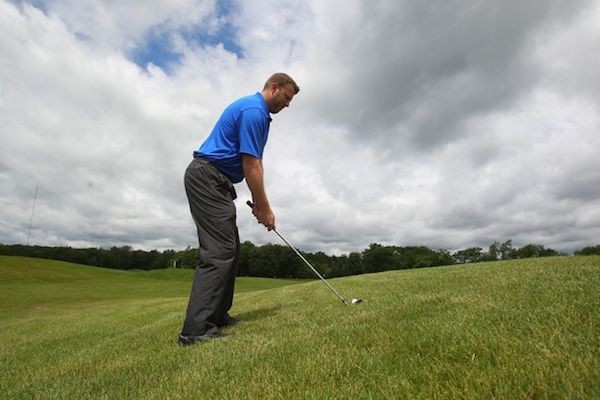
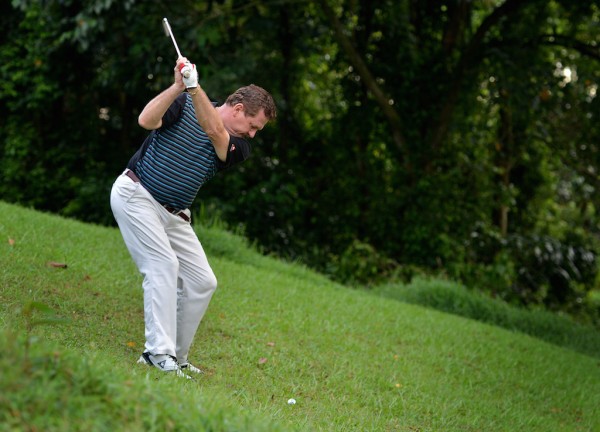
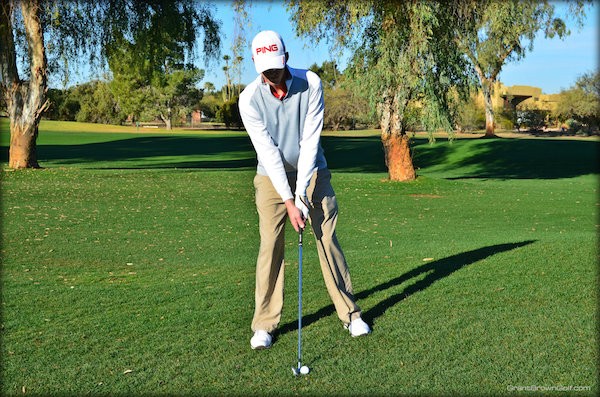
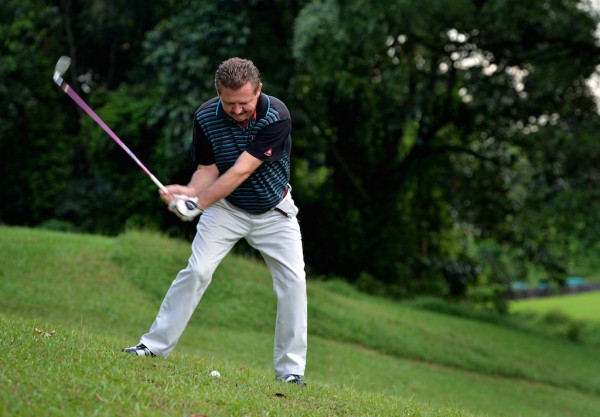















Mike
Apr 19, 2015 at 5:34 pm
Very hard shots
Dennis Clark
Apr 18, 2015 at 7:44 pm
Well you have to remember that the reason the golf ball tends to curve off these slopes is the plane of the arc, and the lie angle effect. If that happens regularly yes you could be “hanging on” to the above feet lie and flipping the below feet lie…ball position is another check point…
Happyday_J
Apr 19, 2015 at 12:09 pm
I’m confused, the arc makes sense, but the lie angle doesnt for me. Wouldn’t the ball above your feet encourage more of an entry with the toe through the turf, opening the face, thus causing the ball to push, and the opposite with below your feet? Wouldn’t the heel catch first causing it to turn over, encouraging a pull?
Happyday_J
Apr 18, 2015 at 12:18 am
I have a question. I have the opposite tendency, meaning the ball above my feet I tend to hang it out to the left (im a lefty) and ball below my feet I tend to pull it. It tends to be a cause of concern b.c the last thing a player wants is to double cross a shot, which that tends to cause. People often tell me that this is “the better players fault due to over correcting”. Thoughts and suggestions?
marcel
Apr 17, 2015 at 12:39 am
simple mechanics of a swing. any shot is clean only if you return in same distance when hitting shot as when setting up before the shot. strong legs and lower back help to keep this intact so you can swing thru the ball.
James
Apr 16, 2015 at 12:07 pm
What about a downhill side-hill lie with the ball below your feet?
Dennis Clark
Apr 16, 2015 at 2:41 pm
Pray ????
RG
Apr 16, 2015 at 9:38 pm
Great article Dennis!
RG
Apr 16, 2015 at 9:40 pm
And what about a foot wedge?!?!
Dennis Clark
Apr 16, 2015 at 9:44 pm
LOL…best club in some players bag
Dennis Clark
Apr 16, 2015 at 2:44 pm
Seriously a combo of above but more difficult. When that lie is severe I recommend chopping it out. Shanking a real danger on that one.
Jafar
Apr 17, 2015 at 9:46 am
You gotta add that, the ball has to be hit back up another hill.
Dennis Clark
Apr 16, 2015 at 10:12 am
I see your point. It’s a tossup probably. But if you are fairly adept at hitting off of a downhill lie that you probably have a fairly steep attack angle in your swing. Thanks
TR1PTIK
Apr 16, 2015 at 1:41 pm
Good point. Now, do you recommend keeping the ball position neutral for both uphill and downhill lies? I usually play the ball a touch further back for downhill lies, but probably stay neutral for uphill lies unless it’s a severe slope or close to the green – then I move the ball forward in my stance.
Dennis Clark
Apr 16, 2015 at 9:43 pm
Ball back I meant…
Dennis Clark
Apr 16, 2015 at 1:51 pm
Sure you can. The problem sometimes with ball cak for downhill is its already coming off quite low.
TR1PTIK
Apr 16, 2015 at 9:31 am
Funny to me that you consider the downhill lie to be “the toughest lie in golf” because I usually do quite well from that position. I think having the ball below my feet is considerably more difficult. To each their own of course. I appreciate the tips though and will try to implement them next time I find myself with an awkward lie.